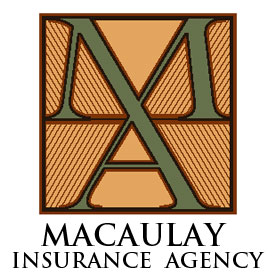Life Insurance, is as it implies, provides insurance on the life of a person payable at the insured’s death. There are several different types of insurance and also different reasons we may wish to purchase each type of coverage.
 Most of us would not think twice about purchasing insurance for our cars or our house. In fact, most of us won’t go without these coverages. However, when thinking about our value as a human being in the form of life insurance, many of us become frightened by the prospect of not only dying, but putting a worth on our life.
Most of us would not think twice about purchasing insurance for our cars or our house. In fact, most of us won’t go without these coverages. However, when thinking about our value as a human being in the form of life insurance, many of us become frightened by the prospect of not only dying, but putting a worth on our life.
If we think about it how many of us actually ever use our homeowners insurance (especially for a total loss) or our auto insurance. Statistically only 21 in 100 homeowners ever file a claim on their home coverage. Auto claims are a little higher. Yet all of us will one day pass and yet most of us are underinsured or not insured at all with a life insurance policy. We presume many object to coverage as they do not see the benefit for themselves. This is true, it is not for the benefit of the insured but the insured’s family, business partners, employer, or lender. All of these will be impacted financially by the death of an insured.
Life insurance at it’s core is just leverage or discounted dollars. It is paying a small premium (normally less then 2% of the face value) and at death a sum is collected by the beneficiary. Normally payment is received within a few weeks if not days. $500 a year in premium may provide $500,000 at the insured’s passing depending on age and health at policy inception.
Life insurance allows us to make sure our families maintain their lifestyle. Retain their homes, finish or even start college, pay off outstanding debts. It gives them time and piece of mind that the loss of a spouse, a child or a parent takes away. In short it allows our family freedom to make choices that our death may have otherwise made for them. Life insurance can also be a savings vehicle that provides living benefits as well as death benefits to help us with our retirement or long term care needs.
Almost all of us wish for financial independence and the piece of mind that accompanies it. Life Insurance is the only product that can help us achieve this goal while we live and after we pass. The question is not, “Do I need life insurance?” but “How much life insurance and what kind?”
Term Life Insurance
 Term life insurance is the simplest and least expensive type of policy. It’s pure insurance with no cash value account. A term life insurance policy has only one function: to pay a specific lump sum to whoever you’ve designated, upon a specific event — your death. The death benefit and the policy limit are the same — a $200,000 policy pays a $200,000 death benefit. The policy protects your family by providing money they can invest to replace your salary, as well as to cover final expenses incurred by your death.
Term life insurance is the simplest and least expensive type of policy. It’s pure insurance with no cash value account. A term life insurance policy has only one function: to pay a specific lump sum to whoever you’ve designated, upon a specific event — your death. The death benefit and the policy limit are the same — a $200,000 policy pays a $200,000 death benefit. The policy protects your family by providing money they can invest to replace your salary, as well as to cover final expenses incurred by your death.
Other types of life insurance provide both a death benefit and a cash value account. Their premiums are larger than term life premiums, because they fund the savings account in addition to buying insurance. These policies are often referred to as cash value policies. Read more about term life insurance…
Whole Life
Whole life insurance can be considered the opposite of term insurance as it is designed to provide protection on a permanent basis until you die. Premiums are guaranteed for the life of the policy. The death benefit is also guaranteed and the policy cannot be cancelled for anything other then non-payment of premium. The policy must also have what are called non-forfeiture values. These are minimum benefits that must be offered to an insured when premiums are not paid or the insured wishes to cancel the policy.
Whole Life policies also have a cash value component that is a savings vehicle. Some policies also pay dividends. Dividends are not taxable (The IRS considers them “return of over charge of premium) and the cash value grows on a tax-deferred basis. The insured has access to their cash value either through direct withdrawals or “cash value loans” which can be a ready source of funds in an emergency or as a compliment to the insured’s retirement. The tax advantages of Life Insurance make them an ideal vehicle for additional retirement savings and benefits for key employees of business’s wishing to provide additional retirement and life insurance benefits for key employees. They are especially attractive when looking to compensate specific employees while not providing for all employees.
Whole Life policies while guaranteed as to minimum cash value and death benefit may have the option of paying premiums for a limited time either through policy language “Paid up at 65” or through vanishing premiums where the cash values and/or dividends can be used to pay the premium instead of the insured continuing payments.
Premiums in whole life policies are essentially averaged over the life expectancy of the insured. Premiums in the early years are more expensive then term but as one grows older they are generally less expensive. Most of the expenses of a policy are generated I the first year of the policy and cash values will be generally less then the premium paid for the first five years or so.
Whole Life and Universal Life insurance policies comprise an overwhelming majority of claims paid by insurance companies and the ages of the insured’s whose passing generates these claims is much higher then those generated by term insurance policyholders. Simply they are in force when the majority of us will pass on. Read more about whole life insurance plans…
What it does
It pays a death benefit to the beneficiary you name and offers you a low risk cash value account and tax-deferred cash accumulation.
It provides a fixed premium which can’t increase during your lifetime as long as you continue to pay the planned amount.
It allows the insurance company to exclusively manage the cash value account in your policy.
It provides you the option to receive dividends from your policy or apply them to reduce payments.
It offers you the right to withdraw from the policy during your lifetime.
What it doesn’t do
It doesn’t allow you the account flexibility to split your money among different accounts or to move your money between accounts.
It doesn’t offer premium flexibility.
It doesn’t offer face amount flexibility.
Universal Life Insurance
Universal Life Insurance is a hybrid of Term Insurance and Whole Life Insurance. It offers permanent protection and potential cash value accumulation while allowing more flexibility in premium payments.
As opposed to Whole Life Insurance the actual cost of insurance charged to the policyholder is the pure Term Insurance cost. So while young, the underlying pure term cost is low, and as one ages it becomes more expensive. To help offset the increased term cost the premiums are structured to create cash value that provides a cushion. Then the cash value can be used to offset the true term costs in later years.
Universal Life Insurance was introduced on a mass scale in the mid 1980’s. This was a time of high inflation and high interest rates. 17% money market rates were not uncommon in this period. The high interest rates made the returns in Whole Life Insurance policies look anemic (though the high rates lasted a short while) and sales of Whole Life Insurance dropped considerably. Many insures were taking the path of “buying term and investing the difference” rather then purchasing Whole Life Insurance with its less then attractive crediting rates of the period.
Unfortunately many consumers bought the term and did not invest the difference. This is the period in time when the U.S. savings rate of consumers began its decline to where it is today. One can argue there might have been investments that paid more but not ones that offered the structured savings component and death benefit protection of a Whole Life Insurance policy.
To combat the buy term/invest the difference argument the industry created Universal Life Insurance, which is essentially buying term and investing the difference except doing so in the structure of an insurance contract. These original policies offered rates as high as 14% initially. As one might imagine with rates projected at this rate it did not take much premium to create the cash value necessary to take the policy to the later years. Many consumers cashed in their whole life policies to chase the higher return and lower premiums only for rates to diminish rapidly and
The current policies being marketed today offer lots of flexibility in premiums and death benefits as well as living benefits such as benefits for long-term care and home care. One might purchase a large amount of insurance initially and slowly decrease the benefits as their financial needs (and insurance needs) change. This allows one to make sure they are adequately insured while younger, with a premium that can be adjusted to ones ability to pay while maintaining at least token coverage in later years (when claims are more likely). A properly structured Universal Life Insurance policy can be of great benefit to consumers seeking permanent death benefit and tax advantaged savings. Alternatively for the consumer interested only in the death benefit premiums can be structured to offer guaranteed benefits at a lower premium, what we like to call Forever Term Insurance.
Universal Life Insurance accounts for the majority of permanent insurance sold today because of its flexibility and permanent nature. The consumer can design within limits a policy that more then ever reflects their individual needs and wants. This cannot be said of either Term Life or Whole Life.
Read more information about universal life insurance.

